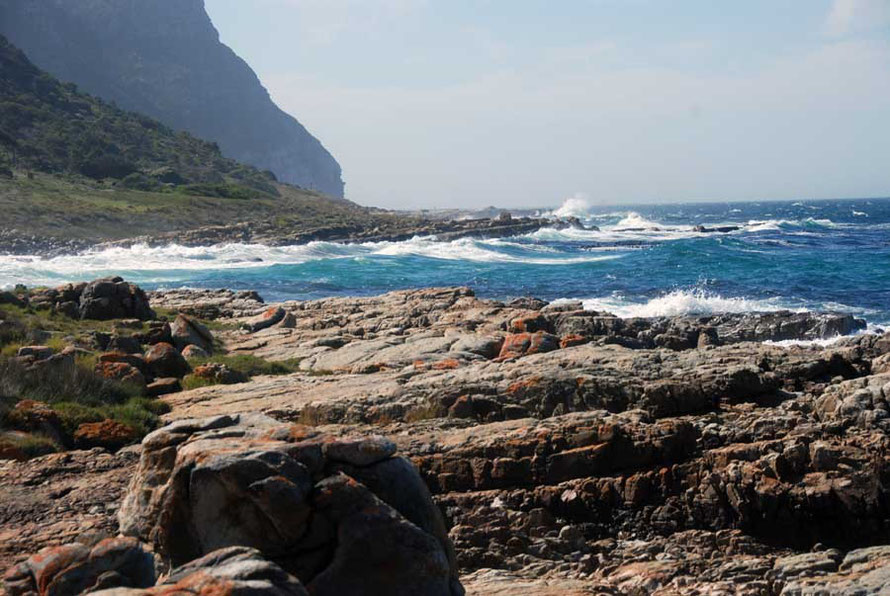The Western Cape: Slaughter, Slavery and Segregation
Portuguese explorers reached the Cape of Good Hope in 1487. In 1497 Vasco de Gama rounded the Cape and crossed the Indian Ocean to reach Calicut in India. These voyages changed the course of Western and Eastern history. The Portuguese established slave trading forts in Angola and Mozambique but were wary of South Africa's tempestuous seas and treacherous currents. It was not until 1652 that Europeans, in the form of 80 Dutch East India Company employees under the command of Jan van Riebeeck, settled at the Cape with a mission to build a fort and supply centre for the Dutch East India fleet - which consisted of 6,000 vessels totalling 600,000 tons and 48,000 sailors.
Although always intended as a minimal supply operation the settlement in the Cape developed its own dynamic and by 1662 had become a 'complex, racially stratified society' (Thompson,2001:33). Dutch and Huguenot settlers arrived under the aegis of the Company and by the beginning of the eighteenth century the Cape had become a slaveholding society where slaves outnumbered free burghers. However, unlike the slaveholding societies in the Americas, slaves in the Cape were generally not from Africa but Madagascar, Indonesia, and Ceylon (Sri Lanka).
A plantation system did not emerge in the Cape and slaveholding was widely distributed amongst the white population. Mortality rates were high and higher still during outbreaks of smallpox and other diseases. Manumission was rare and there was little or no blurring of class or racial boundaries.
The indigenous Khoikhoi peolpe were treated with increasing brutality by the expanding colony. Their lands were usurped; their cattle was appropriated. And their political system and society had largely disintergrated by the end of the 17th century.
The southwestern Khoikhoi were becoming a subordinate caste in the colonial society, set apart by appearance and culture from both the Whites and the slaves; technically free but treated no better than the slaves Thompson p.38.

White settlement continued apace with the emergence of a distinctive group of trekboers - semi-migrant farmers - who took possession of vast tracts of land up to 300 miles north and 400 miles east of original colony. Sparsely distributed and completely unsupported by the colony the trekboers practiced a largely subsistence agriculture with occasional trading of meat and produce with the East India Company.
Initial co-operation by the more egalitarian, but slave owning, trekboers was soon supplanted by outright hostility to the remnants of Khoikhoi and San societies. Armed commandos indulged in lethal raids on the remnant Khoikhoi 'treating there prey as vermin'. By the end of the 18th century the indigenous herders and hunter-gatherers of 'the western part of South Africa had ceased to offer large-scale resistance.' (Thompson, p.49) Remnant Khoikhoi were incorporated as domestic and farm servants and whilst men were exterminated children were shared out as booty along with cattle by the commandos.
By the time the British captured the Cape in 1795 the crucial characteristic of the colony was its 'utter dependence' on the labour of slaves and indigenous people. The slaves experienced an existence that was 'in many respects harsher' than that of their American counterparts and the indigenous people were treated no better than the slaves. In this linguistic Babel a truncated version of Dutch that masters used to communicate with slaves began to emerge as the lingua franca of the colony and was to become formalised as ' Afrikaans'.
Members of the Suurbraak Tug of War Team Speaking Afrikans


